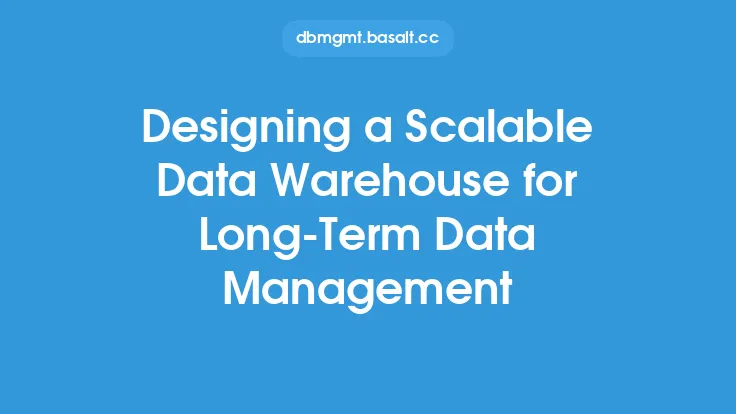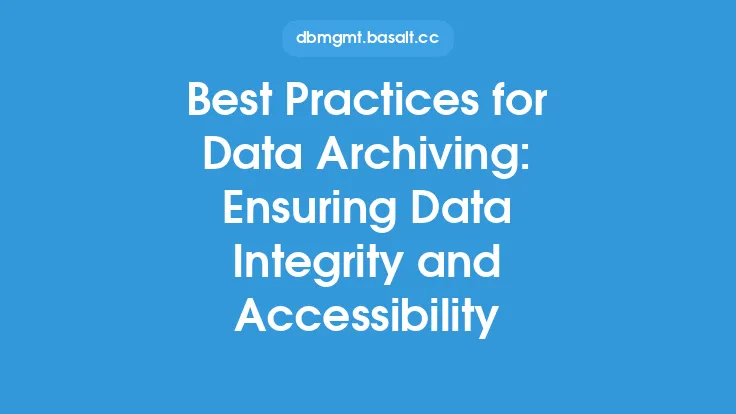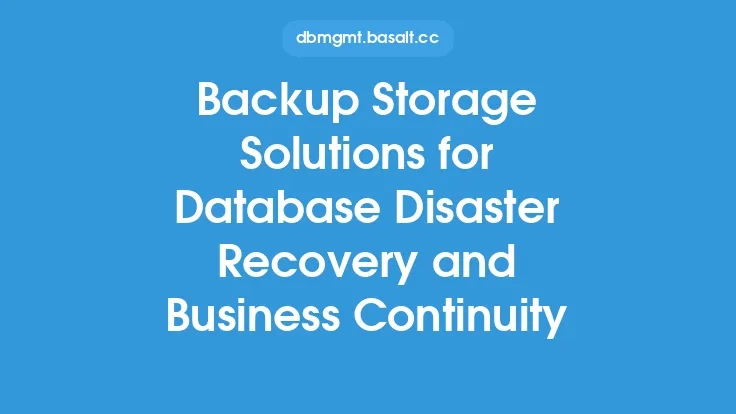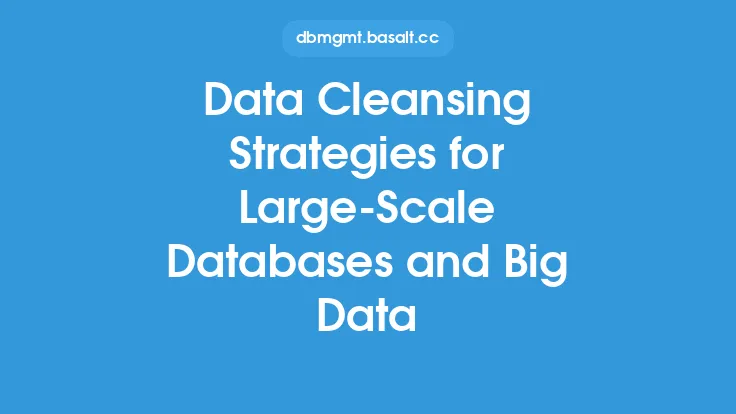Data archiving is a critical process in database management that involves storing data in a secure and compressed format for long-term preservation. This process is essential for organizations that need to retain large amounts of data for extended periods, often for regulatory or compliance purposes. Effective data archiving strategies and solutions can help organizations reduce storage costs, improve data management, and ensure data integrity and accessibility.
Introduction to Data Archiving Strategies
Data archiving strategies involve a combination of techniques and technologies to store and manage data in a way that ensures its integrity, accessibility, and security. These strategies typically involve data selection, data compression, data encryption, and data storage. Data selection involves identifying the data that needs to be archived, which can be based on factors such as data age, data type, and data usage. Data compression involves reducing the size of the data to minimize storage requirements, while data encryption involves protecting the data from unauthorized access. Data storage involves selecting a suitable storage medium, such as tape, disk, or cloud storage, to store the archived data.
Data Archiving Solutions
There are several data archiving solutions available, each with its own strengths and weaknesses. These solutions can be categorized into three main types: on-premise, cloud-based, and hybrid. On-premise solutions involve storing archived data on local storage devices, such as tape or disk, within the organization's premises. Cloud-based solutions involve storing archived data in a cloud storage service, such as Amazon S3 or Microsoft Azure, which provides scalability, flexibility, and cost-effectiveness. Hybrid solutions involve combining on-premise and cloud-based storage to provide a balance between security, scalability, and cost-effectiveness.
Data Archiving Technologies
Several data archiving technologies are available, including tape storage, disk storage, and cloud storage. Tape storage is a traditional and cost-effective method for storing large amounts of data, but it can be slow and prone to data loss. Disk storage is faster and more reliable than tape storage, but it can be more expensive. Cloud storage provides scalability, flexibility, and cost-effectiveness, but it can be vulnerable to data breaches and security threats. Other data archiving technologies include data deduplication, which involves eliminating duplicate copies of data to reduce storage requirements, and data replication, which involves creating multiple copies of data to ensure its availability and integrity.
Data Archiving Best Practices
Several best practices can help organizations implement effective data archiving strategies and solutions. These include developing a clear data archiving policy, selecting the right data archiving technology, and ensuring data integrity and accessibility. A clear data archiving policy should outline the data to be archived, the storage medium to be used, and the retention period. Selecting the right data archiving technology involves considering factors such as storage capacity, data transfer speed, and security features. Ensuring data integrity and accessibility involves implementing data validation, data verification, and data recovery procedures.
Data Archiving Challenges
Several challenges can arise when implementing data archiving strategies and solutions. These include data growth, data complexity, and regulatory requirements. Data growth can lead to increased storage requirements, which can be costly and challenging to manage. Data complexity can make it difficult to select the right data archiving technology and ensure data integrity and accessibility. Regulatory requirements can impose strict rules and guidelines for data retention, which can be challenging to comply with.
Data Archiving Future Trends
Several future trends are likely to shape the data archiving landscape. These include the increasing use of cloud storage, the adoption of artificial intelligence and machine learning, and the growing importance of data governance. Cloud storage is likely to become more prevalent as organizations seek to reduce storage costs and improve scalability. Artificial intelligence and machine learning can help automate data archiving processes, improve data integrity, and enhance data security. Data governance is likely to become more critical as organizations seek to ensure data quality, data integrity, and data compliance.
Conclusion
In conclusion, data archiving is a critical process in database management that involves storing data in a secure and compressed format for long-term preservation. Effective data archiving strategies and solutions can help organizations reduce storage costs, improve data management, and ensure data integrity and accessibility. By understanding the different data archiving strategies, solutions, and technologies available, organizations can develop a clear data archiving policy, select the right data archiving technology, and ensure data integrity and accessibility. As data growth, data complexity, and regulatory requirements continue to evolve, it is essential for organizations to stay up-to-date with the latest data archiving trends and best practices to ensure the long-term preservation of their data.





